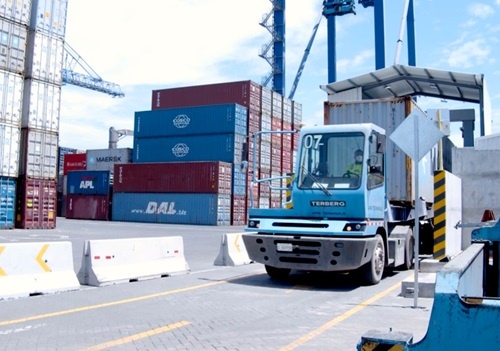
As part of the Customs Integral Modernization Program promoted by the Superintendence of Tax Administration (SAT), APM Terminals Quetzal (APMTQ), Guatemala, has installed two non-intrusive x-ray scanners worth more than US$7 million to allow prompt examination of cargo and obtain real-time images.
The scanners, according to APMTQ, will be used for both import and export containers.
The company said the scanners would increase the control, traceability, and transparency of cargo handling at the temporary Customs warehouse in the terminal.
The General Director of APMTQ, Gabriel Corrales, said, “The presence of APMTQ in Puerto Quetzal has meant an increase of 25% in the port connectivity index, which translates into improved competitiveness and increased exports.
“We will continue working on the proper management of containerized cargo with agile, safe and modern port facilities that allow Guatemala to remain active in foreign trade”.
The terminal operator said coordination of the new scanners with the Superintendence of Tax Administration (SAT) has made it possible to define relevant compliance requirements, as well as to manage the participation of other authorities involved in the terminal so that they are also an active part of the non-intrusive inspections.
“The implementation of technology in our ports is an important step to continue building trust with state institutions, entrepreneurs, actors in the logistics chain and the international community. For Puerto Quetzal and SAT, the implementation of X-Ray Scanners today in this port Terminal, means an important advance in the fight against customs fraud and smuggling, but also translates into more development and competitiveness for the country”, said Superintendent of Tax Administration’s Marco Livio Diaz.
“It is worth mentioning that this equipment is essential in the fight against custom fraud and drug trafficking, since it inspects 100% of the cargo entering the port terminal by sea and land.
“In addition, it allows a more assertive inspection in real time and provides a database of images for further consultation by the authorities.
“All the information transmitted by the non-intrusive inspection equipment will be reviewed exclusively by the authorities involved in the port: SAT, the General Sub-Directorate of Analysis and Anti-Narcotic Information, the Division of Ports and Border Airports, the Regional International Agricultural Health Agency and the Ministry of Agriculture, Livestock and Nutrition,” the company further stated.
APMTQ said since it began operations in 2017, there has been a 62% increase in weekly vessel space availability at Puerto Quetzal, adding new routes and shipping lines that use larger vessels that take advantage of the terminal’s infrastructure.
“Likewise, APMTQ operation has increased the number of direct services (without transshipment) arriving at Empresa Portuaria Quetzal, including Asian ports, by 47%, which means improvements in efficiency and costs for exporters and importers.
“Due to the joint work with the authorities, there has been a considerable increase to the customs collection in the Pacific, growing up to 36% since 2017,” it added.